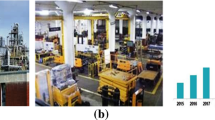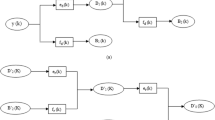Abstract
These days a large number of people are suffering from heart diseases on the planet. Therefore in E-healthcare framework a large number of ECG signals as well as patient confidential information will be communicated via the Internet. Any modifications in the ECG signal may conduct a wrong diagnosis by the specialist, which can be deadly for patients. To ensure secure and safe communication in E-healthcare framework, proposed method presents an enhanced reversible data hiding algorithm based on prediction of most significant bit planes (MSB). Proposed method reserved room for embedding patient information before encryption, after data embedding stego signal is encrypted through combination of stream ciphers respectively. The experimental study has performed on MIT-BIH arrythmia database and proposed method achieved average embedding rate of 15.04 bits per sample, at receiver end precisely recover patient information (Bit Error Rate value is zero) with an average percentage residual difference of 0.0415 between the cover and reconstructed ECG signal successfully.






Similar content being viewed by others
Data Availability
The ECG signals that support the findings of this study can be found at MIT-BIH arrythmia database: https://www.physionet.org/content/mitdb/1.0.0/100.dat.
References
Bhalerao S, Ansari IA, Kumar A, Jain DK (2019) A reversible and multipurpose ecg data hiding technique for telemedicine applications. Pattern Recogn Lett 125:463–473
Bhardwaj R (2022) Efficient separable reversible data hiding algorithm for compressed 3d mesh models. Biomed Signal Process and Control 73:103265
Bhardwaj R, Ashutosh A (2018) An improved block based joint reversible data hiding in encrypted images by symmetric cryptosystem. Pattern Recogn Lett
Bhardwaj R, Tripathi I (2022) An enhanced reversible data hiding algorithm using deep neural network for e-healthcare. J Ambient Intell Humanized Comput:1–19
Chen Y-C, Shiu C-W, Horng G (2014) Encrypted signal-based reversible data hiding with public key cryptosystem. J Vis Commun Image Represent 25 (5):1164–1170
Chi L-P, Wu C-H, Chang H-P (2018) Reversible data hiding in dual stegano-image using an improved center folding strategy. Multimedia Tools Appl 77(7):8785–8803
Edward Jero S, Ramu P, Ramakrishnan S (2014) Discrete wavelet transform and singular value decomposition based ecg steganography for secured patient information transmission. J Med Syst 38(10):132
Hong W, Chen T-S, Wu H-Y (2012) An improved reversible data hiding in encrypted images using side match. IEEE Sig Process Lett 19(4):199–202
Kim Y-S, Kang K, Lim D-W (2015) New reversible data hiding scheme for encrypted images using lattices. Appl Math Inf Sci 9(5):2627
Lee C-F, Huang Y-L (2013) Reversible data hiding scheme based on dual stegano-images using orientation combinations. Telecommun Syst 52 (4):2237–2247
Lu T-C, Wu J-H, Huang C-C (2015) Dual-image-based reversible data hiding method using center folding strategy. Signal Process 115:195–213
Lu T-C, Chi L-P, Wu C-H, Chang H-P (2017) Reversible data hiding in dual stego-images using frequency-based encoding strategy. Multimed Tools Appl 76(22):23903–23929
Mansour RF, Abdelrahim EM (2019) An evolutionary computing enriched rs attack resilient medical image steganography model for telemedicine applications. Multidim Syst Sign Process 30(2):791–814
Paillier P (1999) Public-key cryptosystems based on composite degree residuosity classes. In: International conference on the theory and applications of cryptographic techniques. Springer, pp 223–238
Shiu H Jr, Lin B-S, Huang C-H, Chiang P-Y, Lei C-L (2017) Preserving privacy of online digital physiological signals using blind and reversible steganography. Comput Methods Prog Biomed 151:159–170
Yang C-Y, Wang W-F (2016) Effective electrocardiogram steganography based on coefficient alignment. J Med Syst 40(3):66
Yang C-Y, Cheng L-T, Wang W-F (2018) Effective reversible data hiding in electrocardiogram based on fast discrete cosine transform. In: Proceedings of the future technologies conference. Springer, pp 640–648
Yao H, Qin C, Tang Z, Tian Y (2017) Improved dual-image reversible data hiding method using the selection strategy of shiftable pixels’ coordinates with minimum distortion. Signal Process 135:26–35
Zhang X (2011) Reversible data hiding in encrypted image. IEEE Sig Process Lett 18(4):255–258
Zheng K-M, Qian X (2008) Reversible data hiding for electrocardiogram signal based on wavelet transforms. In: 2008 International conference on computational intelligence and security, vol 1. IEEE, pp 295–299
Author information
Authors and Affiliations
Corresponding author
Ethics declarations
Competing interests
The authors declare that they have no known competing financial interests or personal relationships that could have appeared to influence the work reported in this paper.
Additional information
Publisher’s note
Springer Nature remains neutral with regard to jurisdictional claims in published maps and institutional affiliations.
Rights and permissions
Springer Nature or its licensor holds exclusive rights to this article under a publishing agreement with the author(s) or other rightsholder(s); author self-archiving of the accepted manuscript version of this article is solely governed by the terms of such publishing agreement and applicable law.
About this article
Cite this article
Bhardwaj, R. Effective electrocardiogram steganography for secured patient information transmission based on most significant bit planes prediction. Multimed Tools Appl 82, 15779–15796 (2023). https://doi.org/10.1007/s11042-022-13955-0
Received:
Revised:
Accepted:
Published:
Issue Date:
DOI: https://doi.org/10.1007/s11042-022-13955-0




